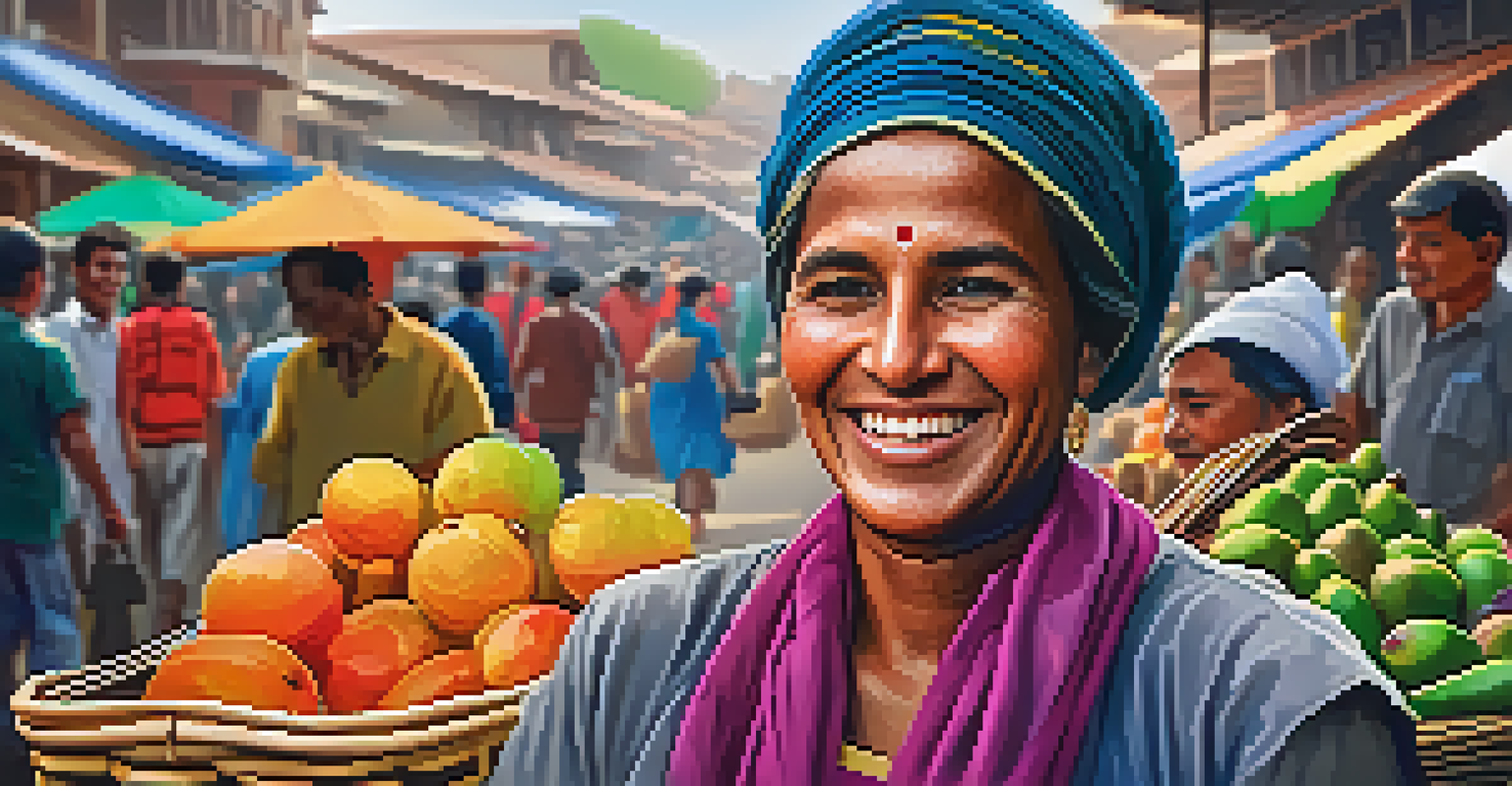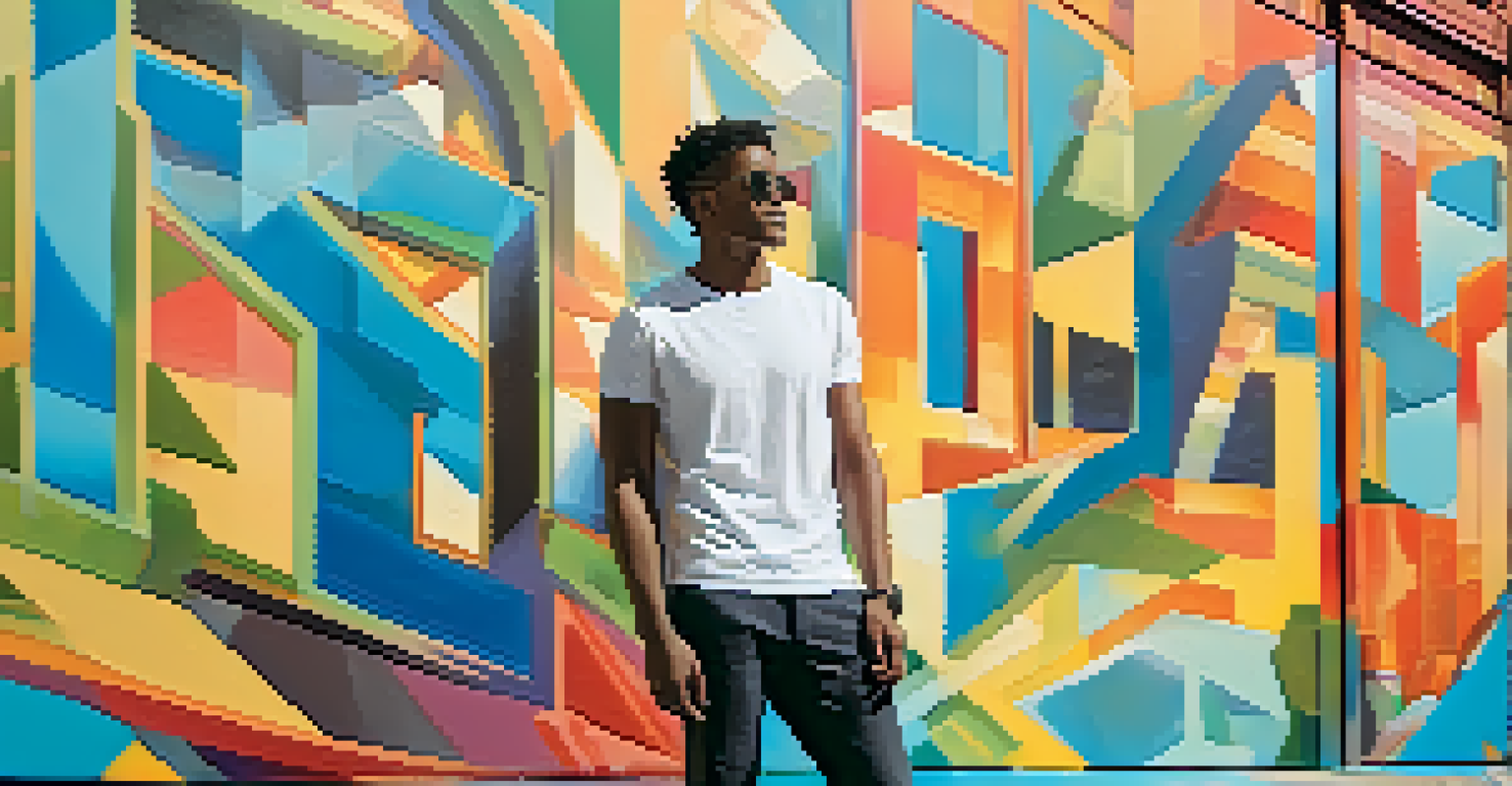Portraits on the Road: Travel Photography Techniques to Try

Finding the Perfect Location for Portraits
The backdrop of your portrait can make all the difference. When traveling, look for locations that resonate with the subject’s personality. For example, if you’re photographing someone with a love for nature, a lush park or a scenic mountain range can enhance the portrait’s theme.
A portrait is not made in the camera but on either side of it.
Consider the lighting and time of day as well. Early morning or late afternoon, known as the golden hour, provides soft, warm light that flatters most subjects. This natural lighting helps create a more inviting and engaging portrait.
Lastly, don’t hesitate to explore urban environments, too! A vibrant street mural or an interesting architectural feature can add a modern twist to your portrait, making it feel lively and dynamic.
Using Natural Light to Enhance Portraits
Natural light is your best friend in travel photography. It can transform a simple portrait into a stunning masterpiece, showcasing your subject in the best possible way. Position your subject so that the light falls on their face, avoiding harsh shadows that can detract from their features.

Experiment with different times of day to see how the light changes. For instance, during sunrise, the soft, diffused light can create a dreamy atmosphere, while midday sun might require some shade to prevent squinting and overexposure.
Choose the Right Location Wisely
The backdrop of your portrait should resonate with the subject’s personality, enhancing the overall theme.
Also, remember to use reflectors, like white boards or even light-colored walls, to bounce light back onto your subject. This technique can soften shadows and illuminate facial features beautifully, ensuring a captivating portrait.
Capturing Genuine Expressions and Emotions
Great portraits are all about capturing the essence of your subject. To do this, create a comfortable environment where they can be themselves. Engage them in conversation to evoke natural expressions—this can make all the difference between a stiff pose and a relaxed smile.
Photography is the story I fail to put into words.
Try to incorporate elements of storytelling into your portraits. Ask your subject about their travels or what brought them to this location. This not only helps in building rapport but also allows their personality and emotions to shine through in the photograph.
Remember, candid moments often lead to the most authentic images. Keep your camera ready and be observant; sometimes the best shots happen when your subject is lost in thought or sharing a laugh.
Incorporating Local Culture into Portraits
Travel photography is a fantastic opportunity to showcase local culture through your portraits. Consider dressing your subject in traditional attire or placing them against culturally significant landmarks. This not only enhances the portrait but also tells a story about the place and its people.
You can also capture local customs or rituals in your portraits. For instance, if you’re in a market, photograph your subject interacting with local vendors. This adds context and depth, making the portrait more engaging for viewers.
Utilize Natural Light Effectively
Natural light can transform portraits, so experiment with different times of day for the best results.
Lastly, explore the idea of including props that reflect the local culture. Whether it’s a handwoven basket or a piece of traditional jewelry, these elements can enrich your portraits and connect the subject to their surroundings.
Experimenting with Composition Techniques
Composition is key in photography, and it can greatly affect the impact of your portraits. Use the rule of thirds by placing your subject slightly off-center to create a more dynamic image. This technique draws the viewer’s eye and adds interest to the portrait.
Don’t be afraid to experiment with different angles, too. Shooting from above can give a unique perspective, while a low angle can make your subject appear more powerful and imposing. Variety in your shots keeps things fresh and exciting.
Additionally, consider framing your subject with natural elements like overhanging branches or doorways. This technique can create a sense of depth and focus, guiding the viewer’s eye to the subject and enhancing the overall composition.
Post-Processing Techniques to Enhance Portraits
Post-processing is where you can take your portraits to the next level. Using software like Adobe Lightroom or Photoshop, enhance the colors and adjust the exposure to make your images pop. A little tweaking can turn a good portrait into a stunning one.
Consider applying subtle filters or presets that match the mood of your travel experience. For example, warm tones can evoke nostalgia, while cooler tones can create a modern feel. Just remember to maintain the authenticity of the portrait.
Incorporate Local Culture Creatively
Showcasing local culture through attire, customs, and props enriches your portraits and tells a deeper story.
Lastly, don’t forget to retouch minor blemishes or distractions in the background. This can help keep the focus on your subject, ensuring that their personality shines through without distractions.
Sharing and Showcasing Your Travel Portraits
Once you’ve captured and edited your travel portraits, it’s time to share them! Social media platforms like Instagram or photography-focused websites are great for showcasing your work. Use relevant hashtags to reach a broader audience and connect with other photographers.
Consider creating a travel blog or portfolio website to display your portraits in a more curated manner. This allows you to narrate the stories behind the images, giving viewers a deeper understanding of the moments you captured.

Lastly, engage with your audience by encouraging feedback and discussions about your work. This interaction not only builds a community around your photography but can also inspire you to keep exploring and improving your craft.